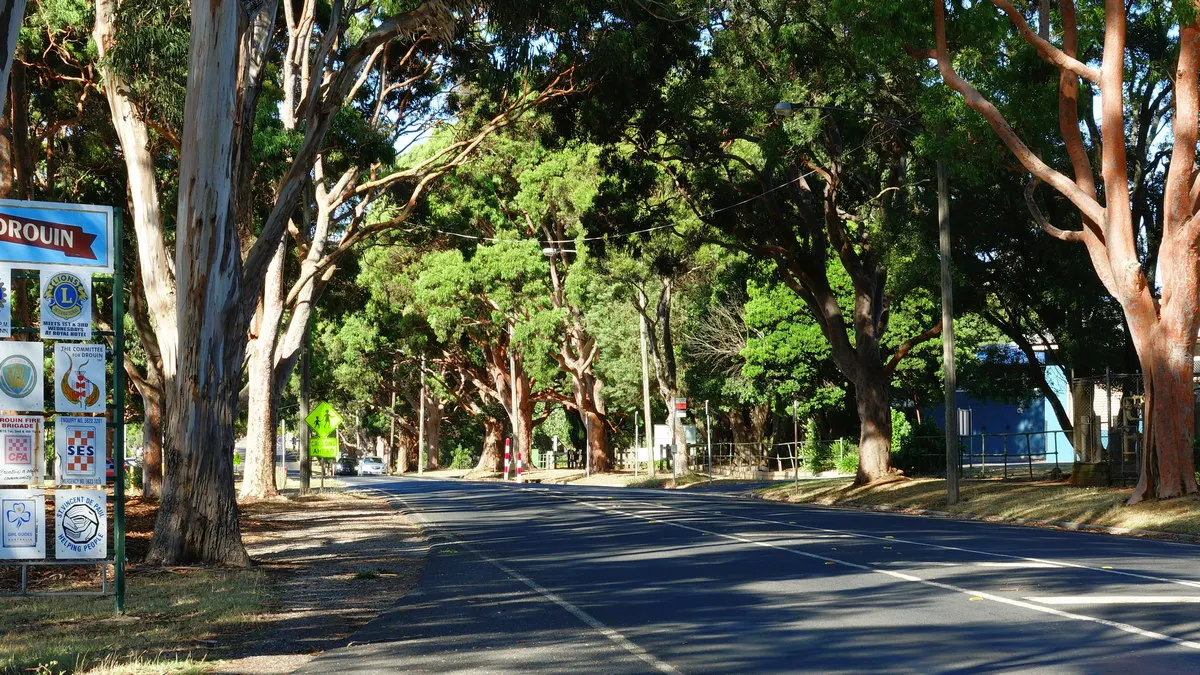Dutch urban forest expert, Cecil Konijnendijk of the Nature Based Solutions Institute, has devised a set of guidelines to assess the bare minimum benchmark for nature in urban spaces.
The 3-30-300 rule: ‘If you look out the window can you see 3 trees?’ ‘Is there 30% canopy cover?’ ‘Do you have a park within 300m?’
 |
| Drouin's CBD English Elms provide great shade - they have canopy |
Research by the RMIT University of Melbourne in collaboration with the Technical University of Munich found that most cities failed the 3-30-300 rule, particularly the 30 part.
Professor Thami Croeser of RMITs Centre for Urban Research says, “It seems like a lot of people have views to enough trees, but they're not getting enough canopy …You could possibly argue that it's a bit of a global phenomenon of too small trees in cities.”
 |
| Native Frangipani is a popular street tree native to the rainforests of northern NSW and Queensland - virtually no shade! |
 |
| The avenue of Angophoras and Mountain Grey Gums in Main South Rd cast wonderful shade all day long - helping to reduce the UHI effect |
Drouin’s large canopy remnant and planted trees (eucs, oaks, planes, etc) are going to prove to be valuable in the face of global warming. Perhaps we need bigger back yards or bigger nature strips – or both – where a decent canopy tree could be planted?
No comments:
Post a Comment